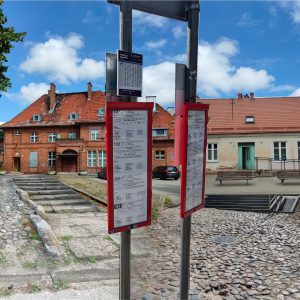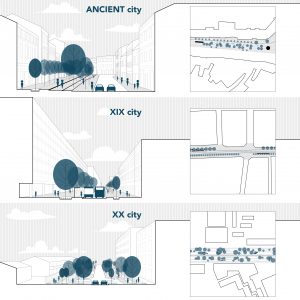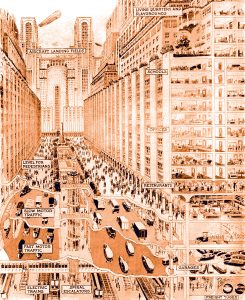“Mobility” as a conventional concept typically refers to transportation systems and infrastructure. Instead, in this research, it is granted a new perspective: mobility is approached as a form of spatial agency that promotes the reconstruction of collateral spaces and drives a new spatial pattern. Under this specific Chinese cultural context, mobility manifests as the action of the body, while also tending to and activating the mechanism of informal practice. Drawing on the analytical framework of “non-place,” it can be interpreted as a key mechanism for transforming the function of space. Walking paths and acts of lingering, along with spontaneous spatial interventions, point toward the formation of a new spatial order and situation.
This research focuses on a residential building situated in a mountainous city in China, Chongqing. Due to its dense spatial structure and the pedestrian circulation system stretching across the architecture and urban space, it gives rise to a number of collateral spaces between the architectural structure and public space, such as passages, staircases, and platforms. These blurred and hard-to-categorize spaces are shaped by the daily passage and lingering of users, generating constantly changing daily practices which are identified in this context as informal practices. These practices, through bodily presence, form various walking paths and spatial occupations, reflecting the concept of “tour” in Michel de Certeau’s The Practice of Everyday Life. In this context, mobility functions as an agency that empowers actors and negotiates spatial reconstruction. With the body as a tool of practice, the presence of the individual becomes more prominent, and these informal practices can be seen as a form of intentional occupation.
Mapping is conducted as the core methodology in this research. It first records these ongoing spatial transformations, using a series of mappings to recover how space was occupied and reorganized through informal practices. By contrasting existing and newly shaped spatial patterns, this process further deconstructs the architecture and reveals its relationship with the use of space. In addition, mapping operates as a processual tool to trace the everyday practices of multiple actors, resulting in a narrative visualization where paths and traces of actions overlap during the drawing process. This further links informal practices to the reconstruction of social structure within specific social discourses. Hence, this research takes mobility as spatial agency, forming a research framework to understand the mechanisms of informal practices and their relationship to architecture.
Bibliography
- Nishat, A., Schneider, T., Till, J. (2011). Spatial Agency: Other Ways of Doing Architecture. London: Routledge.
- de Certeau, M. (1988). The Practice of Everyday Life. Berkeley: University of California Press.
- Hill, J. (2003). Actions of Architecture: Architects and Creative Users. London: Taylor & Francis.



